The art and science of timespeaking is called horology, and the knowledge of the automatic watch terms simplifies the discovery of this interesting world. You can understand the language of watches, regardless of whether you are a first-time buyer or an expert watch collector, in order to enjoy design, quality, and craftsmanship and make better purchasing choices.
1. What is Horology?
The word “Horology” is derived as a combination of two Greek words: “Hore means Time” and “Logos means Study”. It is the measurement and study of time using devices such as watches and clocks. Although horology deals with all types of sundials, automatic clocks, and so on, it is particularly associated with mechanical and automatic watches.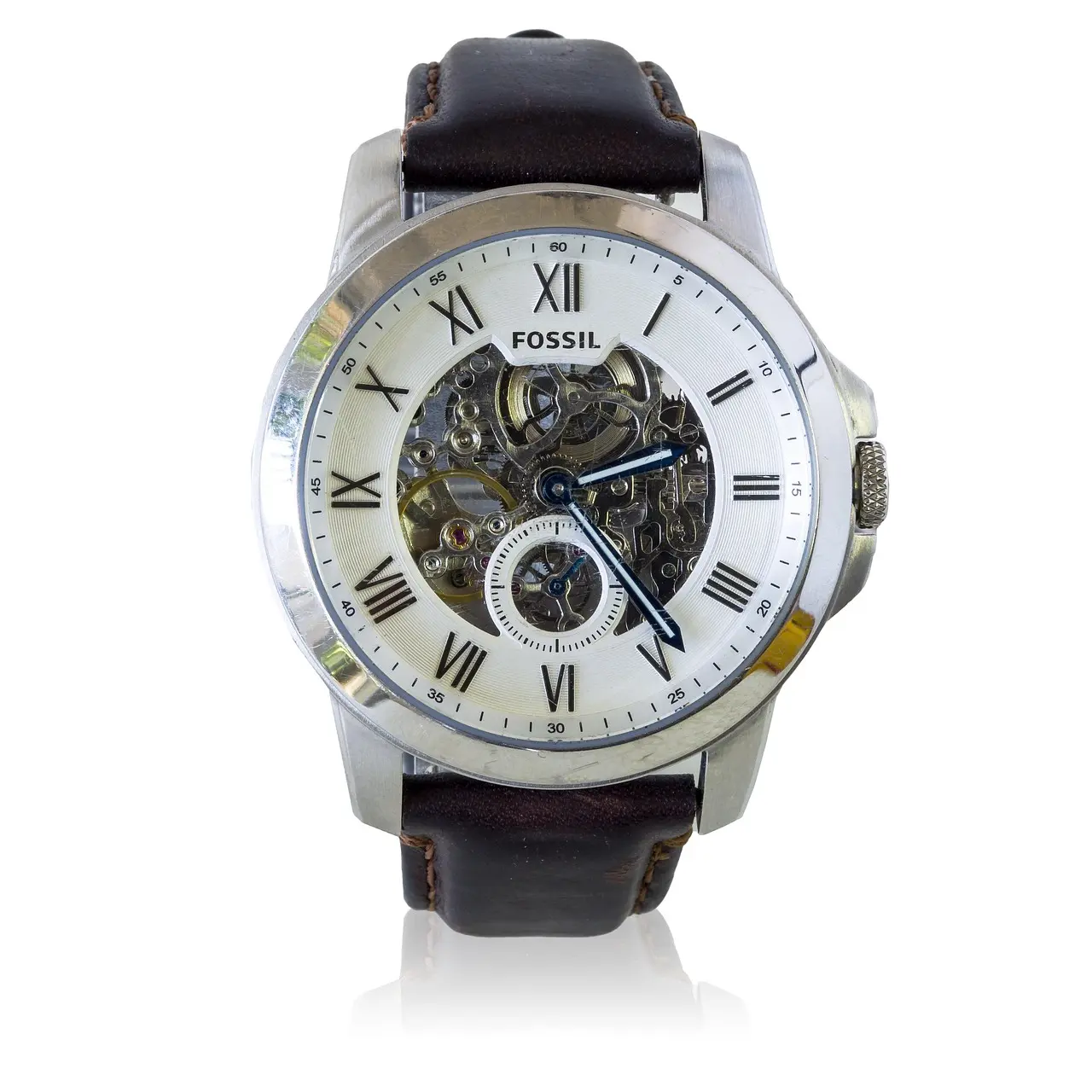
2. Why Learn Automatic Watch Terminology?
You have probably read the specification of watches online, and it is full of words that you have never heard of. First, such terms as “power reserve” or “escapement” may be confusing. When you get to know them, however, it is all a lot clearer. This is the reason why it is so important to learn automatic watch terms.
You Understand What Makes a Watch Valuable
Not every watch is made the same way. You learn such terms as “balance wheel” or “frequency” and understand what influences the performance of different designs. You will not just be looking at the brand names or the price tags, but you will be aware of the actual information that sells.
You compare Watches More Confidently
Numbers and terms will be all over when purchasing a watch. When you are aware of their meaning, you can compare 2 watches without any confusion. As an example, a 40-hour power reserve can be compared to an 80-hour power reserve, and you know which one will last longer when not used.
You Appreciate Craftsmanship More
Automatic watches are small machines consisting of numerous moving parts. Knowing the terminology shows you have many man-hours to go into the instruction of one. And when you are told about jewels or escapements, you do not nod; you see how this has to do with keeping your watch in time.
You Take Better Care of Your Watch
Terminology also helps you to know how to take care of your watch. When you get to know the importance of jewels, you know the reason why lubrication is important during servicing. When you are aware of frequency, you can learn the functioning of accuracy. The information will assist you in maintaining your watch in good condition.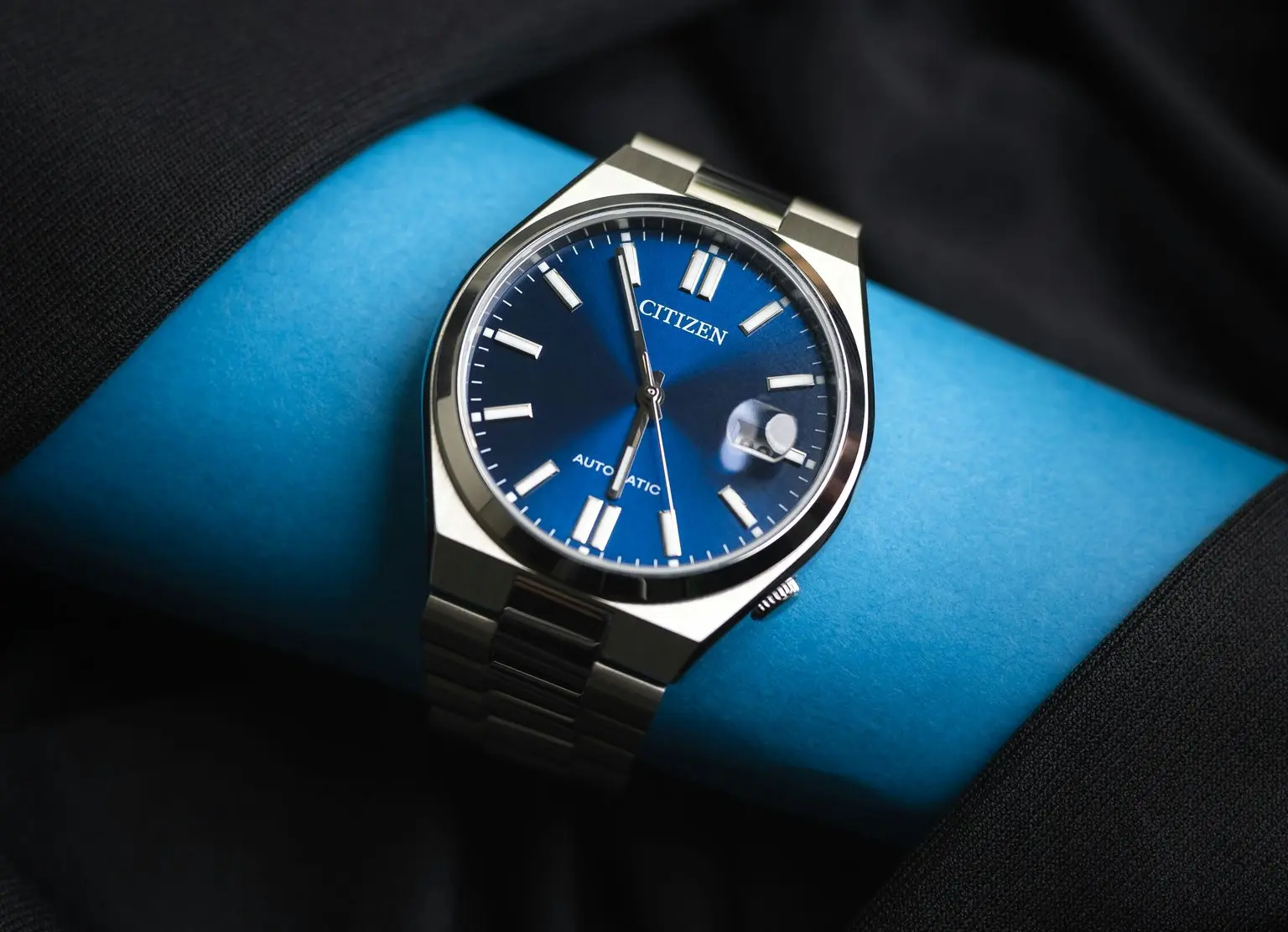
3. Essential Automatic Watch Terminology (A to Z Glossary Style + Section Wise)
3.1 Terms of Movement (The Heart of the Watch)
These are words that are used to explain the inner workings that make your watch tick.
Amplitude
Amplitude is a measure of the angle in which the balance wheel moves in a single oscillation. Healthy amplitude in most modern automatic watches is 270dig to 315dig. When it becomes too low, the accuracy is affected. During servicing, watchmakers test the amplitude.
Automatic Movement
The automatic mechanism that drives your watch. When you bend your wrist, the rotor rotates and unwinds the mainspring. It does not need to be wound every day, as it would with manual watches.
Balance Wheel
The heartbeat of the movement. It swings back and forth and breaks time in equal parts. It is precise when paired with the hairspring.
Caliber
The type or construction of a movement, such as ETA 2824-2 or Seiko 6R35. It outlines the architecture, features, and specifications.
Chronometer
A high-precision movement that is certified by COSC (-4/+6 seconds per day). Chronometer watches are put through several tests and are typically high-end.
Escapement
This is the mechanism that moves the energy of the mainspring to the balance wheel in regular beats to ensure that the watch does not unwind too fast.
Frequency
The beats per hour that the balance wheel completes (VPH). A common rate is 28,800 VPH (4 Hz). The higher the frequency, the smoother the movement of the second hand.
Gear Train
The train of gears that conveys the power of the mainspring to the hands. Every gear ratio provides correct movement of hours, minutes, and seconds.
Jewels
Artificial rubies within the movement that minimize friction at gear pivots. Normal automatics have 17-25 jewels.
Mainspring
The coiled spring that stores the energy in the barrel. It relaxes slowly, driving the action.
Movement
The engine of your watch, which has all the mechanical parts. Automatic movements are the most popular in horology in terms of craftsmanship.
Oscillation
The to-and-fro movement of the balance wheel, which controls time. Constant oscillation is equal to proper timekeeping.
Power Reserve
The duration that your watch will run without being worn. The standard ranges are 36-80 hours; there are luxury models that go up to one week.
Regulator
A small screw employed by watchmakers to adjust the time.
Rotor
It is a semi-circular weight that rotates with the movement of your wrist, winding the mainspring. Frequently seen with transparent casebacks.
Tourbillon
A cage that rotates around the escapement and balance wheel. It was originally created to counteract the errors of gravity, but today it is a masterpiece of the watchmaking industry.
VPH (Vibration Per Hour)
A frequency measurement of 28,800 VPH = 8 ticks/s.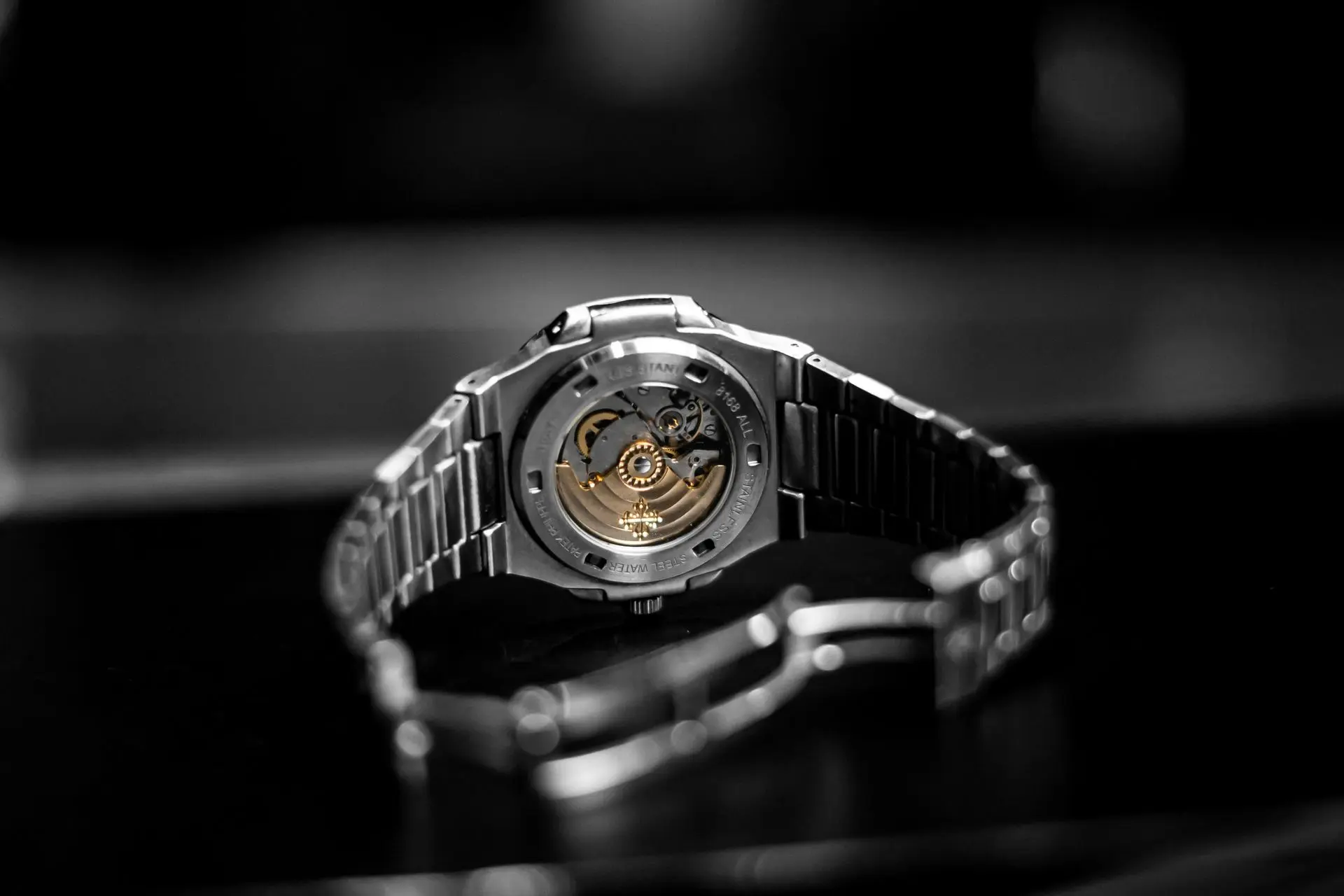
3.2 Dial and Display Terms (The Watch Force)
These are the parts where you can see and read the time without any difficulties.
Dial
The “face” of the watch. It has numerals, indices, subdials, and occasionally complications such as moon phases.
Indices (Markers)
Hours and minutes on the dial. They can be printed, applied, or lume-filled to be read at any time.
Lume
Glow-in-the-dark index and hard paint. It is light-charging and shines in the dark, which is necessary with divers and field watches.
Skeleton Watch
A design in which the dial and plates are cut away, leaving the movement visible.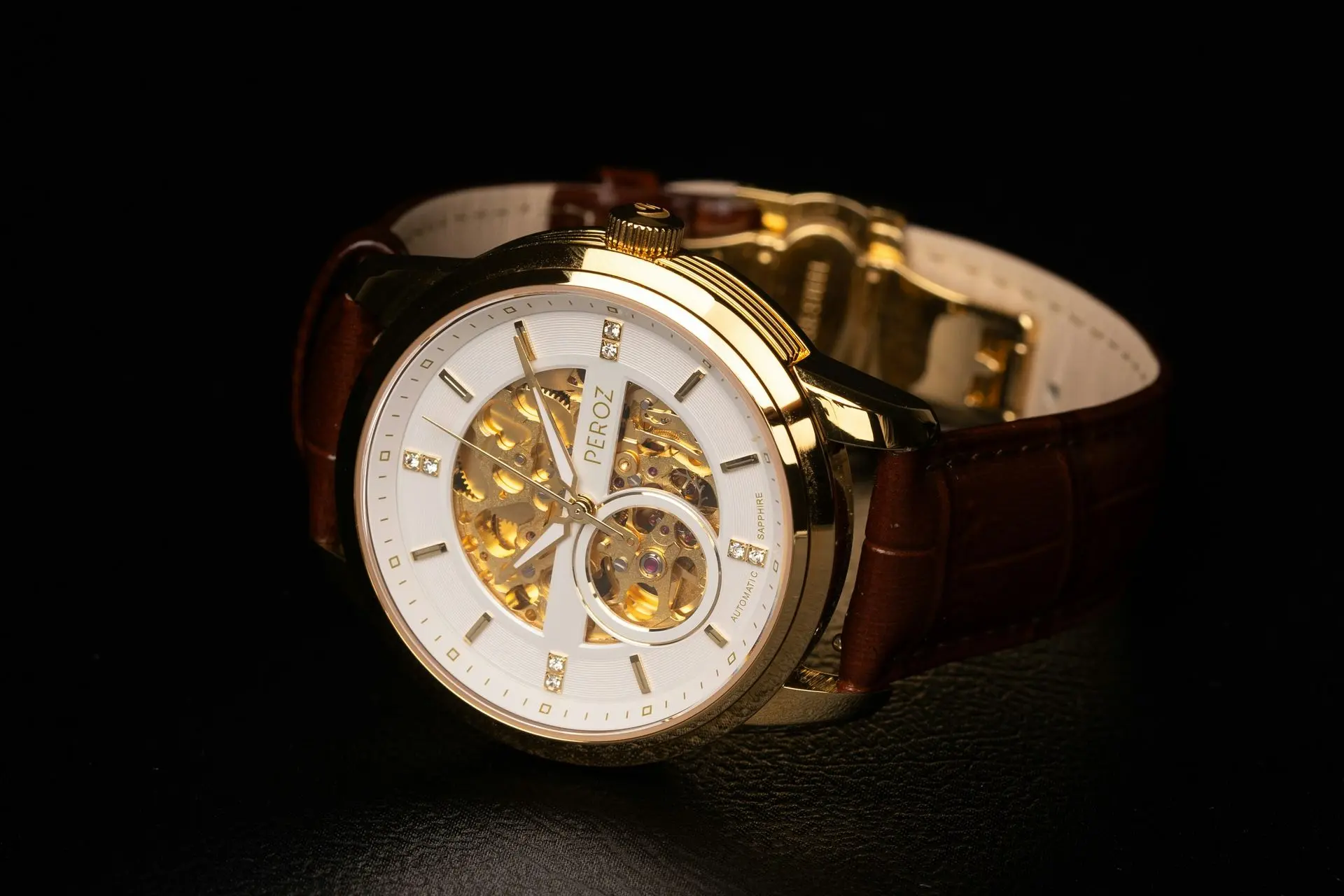
3.3 Case and Exterior Terms (The Protective Shell)
These characteristics guard the movement and provide functionality.
Bezel
This is the ring surrounding the dial that may be fixed or rotating. On the diving watches, a unidirectional bezel times safe dives.
Unidirectional Bazel
A bezel that rotates only counterclockwise so that the diver would not overestimate the air supply.
ISO Certification
International standards (such as ISO 6425 for dive watches) ensure waterproofness, shockproofness, and longevity.
Water Resistance
The depth rating is the amount of water pressure that your watch can withstand.
As an example,
30 m = splash proof
200 m = dive-ready
Winding Crown
This is the knob on the side that is used to wind, set time, and adjust complications. Screw down crowns are more water resistant.
4. Other Useful Automatic Watch Terms (Quick Glossary)
Complications
“Complications” refers to any other functions other than the use of hours, minutes, and seconds. Popular examples are the chronographs, moon phases, power reserve indicators, and perpetual calendars. The complications are complex, and they tend to add value.
COSC Certification
The Controle Official Suisse des Chronometers is a Swiss organization that certifies watches as accurate. A watch that is certified by COSC has a precision of -4 to +6 seconds a day, which is very reliable.
Hacking Seconds
Hacking seconds enables you to freeze the hand of the second when you lift up the crown to set the time. This allows you to set your watch exactly, and it comes in handy with military, aviation, and professional time settings.
5. How These Terms Affect Watch-Buying Decisions
When you are shopping for an automatic watch, the knowledge of horology and automatic watch terminology will guide you to make a better decision. Every term will provide you with a clue about quality, authenticity, and value.
For example, the power reserve is important when you intend to turn in your watches, as it will dictate how long your watch will run off your wrist. Jewel count is to show endurance of the movement. The ISO certifications ensure that a dive watch will work in pressure.
Type of movement and caliber are also things that you should consider, as they have an impact on the cost of servicing and its resale value. Knowing the lingo will help you not be baffled by marketing terms; you will know what really counts.
Some of the tips to consider when buying include:
- Find COSC certification in case accuracy matters.
- Check the power reserve to suit your way of life.
- Select outdoor by selecting lume and water resistance.
- Simple designs are available, or you can choose watches with complications according to what you need.
With this glossary, you are sure to make a purchase and invest in a watch that suits your style and purpose.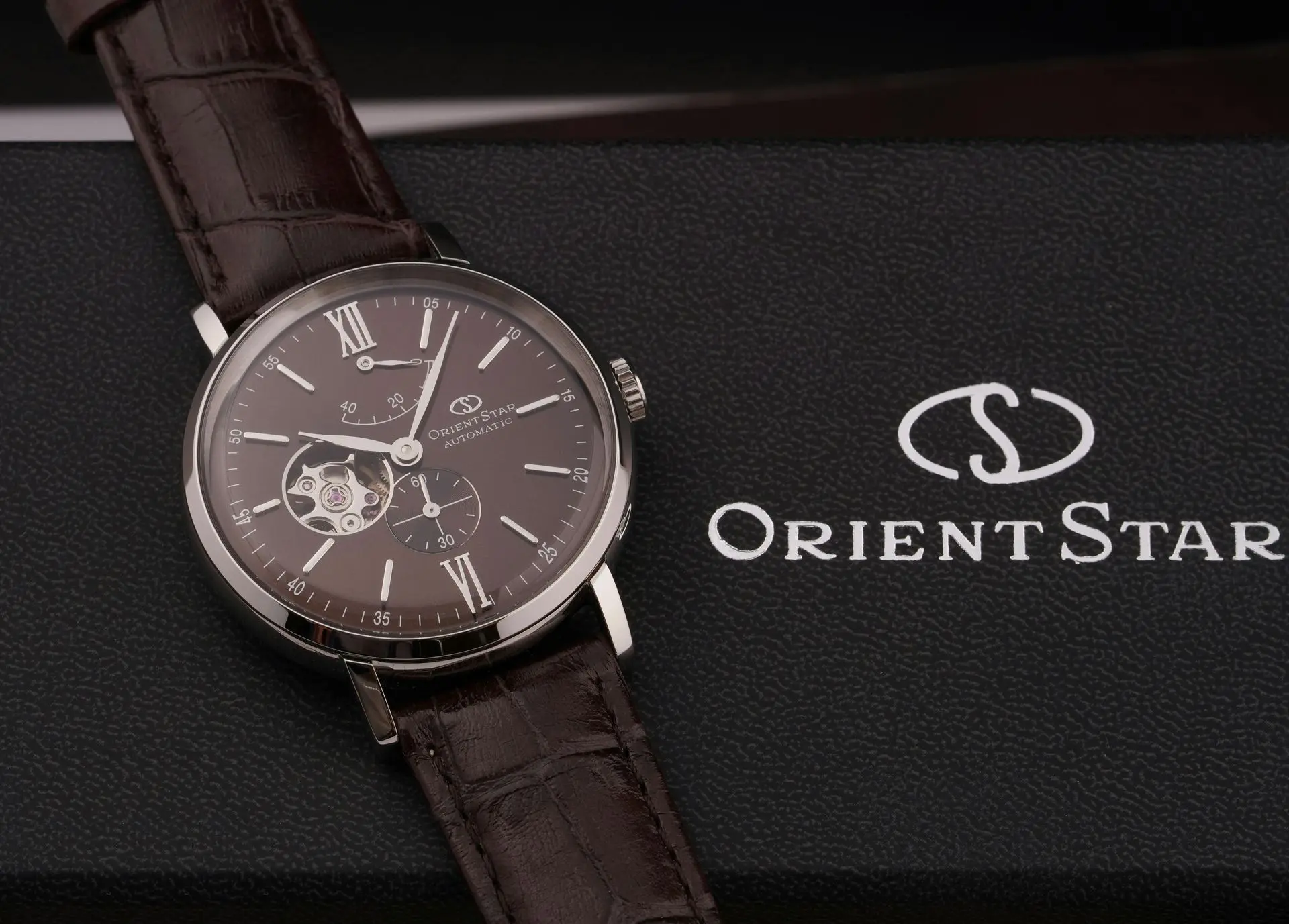
6. Tips for Beginners Learning Watch Terminology
It does not need to be tough to learn the terminology of automatic watches. You need to take little steps, and as time goes by, the words will be perfect.
- Read the brand manuals and catalogs: These are simple descriptions of the parts and features.
- Browse horology books: Simple books are introductory and provide you with both history and simple definitions.
- Participate in forums and groups about watches: Discussion with other watch enthusiasts will make you learn more quickly.
- Watch videos and blogs: It is easier to learn because you get to see things such as a rotor or escapement working.
- Go to watch shops or exhibitions: This is essential to be able to relate terms with the real examples that you have in your hands.
The more you read, the more natural watches will speak to you. You will be able to read any description of watches soon and know just what this means.
7. Conclusion
Horology is a combination of engineering, design, and tradition in a single timepiece. You can learn the automatic watch terminologies using this watch glossary and become a smarter and more confident buyer. All the words, such as the “amplitude” and “water resistance”, provide you with an understanding of how your watch functions and why it is important.
At LEITZEIT, we blend horology and modern craftsmanship to make automatic watches that are made to suit you. Precision, durability, and classic style are embodied in our watches. Once you know this watch glossary, you not only enjoy horology but also make knowledgeable decisions. Today, contact us and discover a watch that fits your journey.